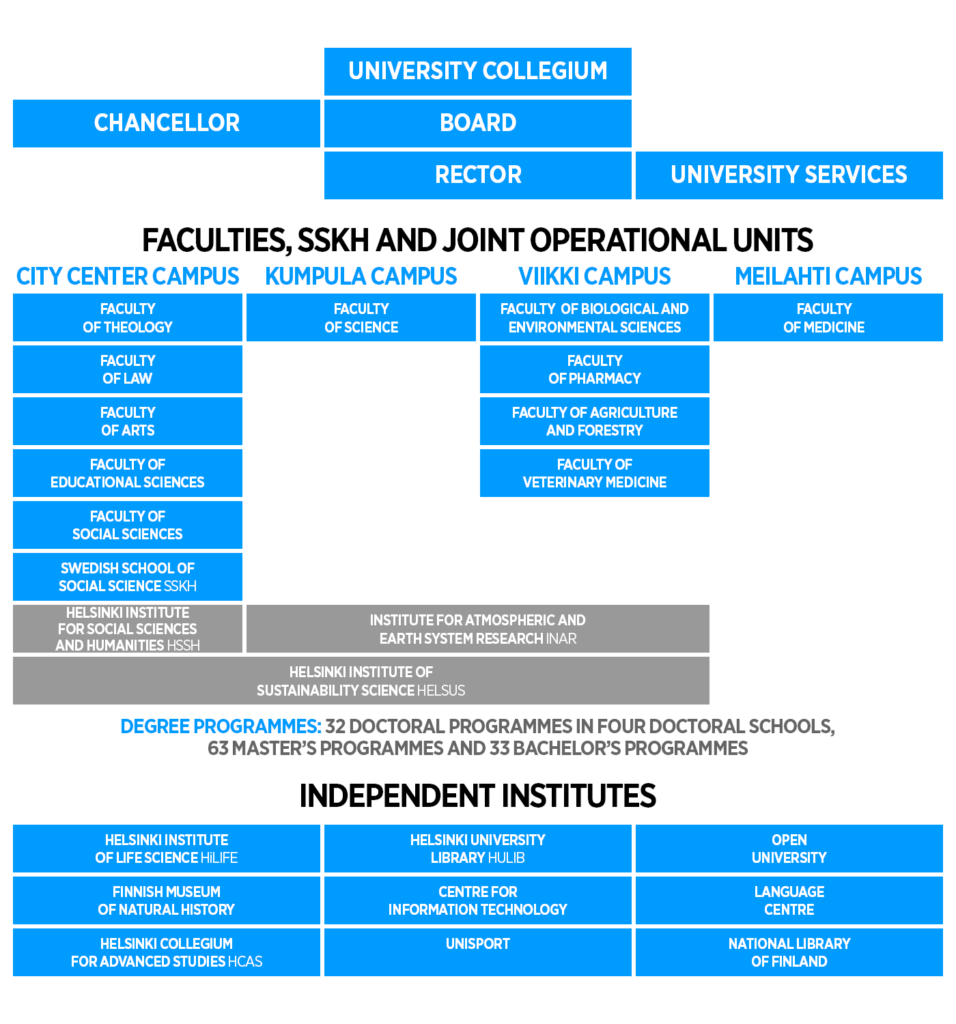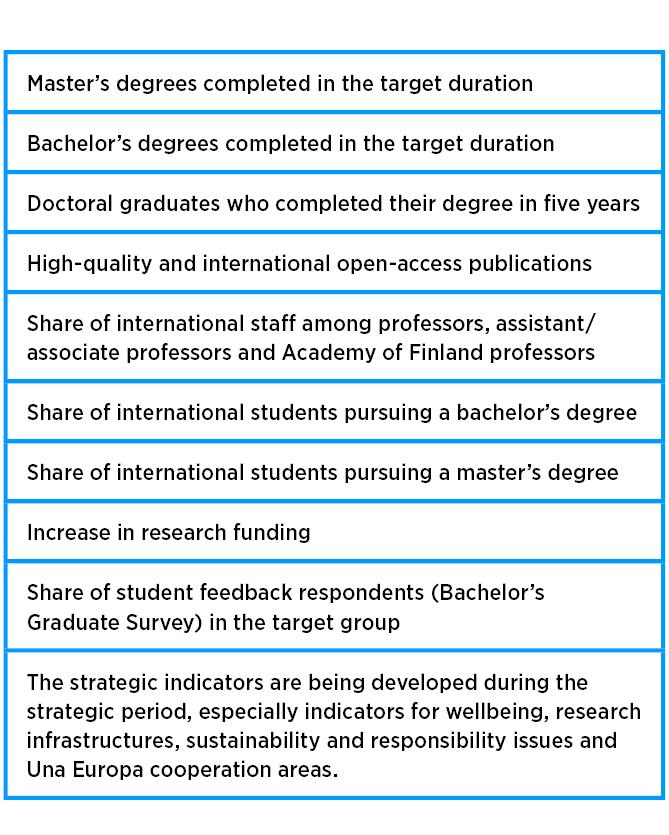Organisation and management system of the University of Helsinki
The University of Helsinki (UH), founded in 1640, is the most multidisciplinary university in Finland. The UH is bilingual in accordance with the Universities Act, meaning that teaching and degrees are given in Finnish and Swedish. The UH consists of 11 faculties, nine independent institutes steered by the rector, the Swedish School of Social Science and University Services. The University Board is the highest decision-making body. The Board’s members from outside the UH community are appointed by the University Collegium, which also confirms the UH’s financial statements as well as decides on discharging the Board members and the rector from liability.
Administrative and support services are provided by the University Services unit or independent institutes that offer services (libraries, Centre for Information Technology, UniSport, etc).
The University of Helsinki Group consists of the UH and its subsidiaries and affiliated companies, the University of Helsinki Funds and its Group, Helsinki University Properties Ltd and its Group, as well as two foundations.

Figure 1: Organisation chart of the UH
Degree education is organised into degree programmes, which may include studies in one or more disciplines.
Degree programmes at the UH:
- 33 bachelor’s programmes
- 63 master’s programmes
- 32 doctoral programmes in four doctoral schools.
The UH’s management system is based on the Universities Act and the regulations of the UH which define, for example, the UH’s administrative bodies, leaders and directors as well as their duties and responsibilities. The Regulations of the University of Helsinki set out the operational and unit structure as well as the organisation of operations and administration.

Figure 2. Key figures for education and staff 2020
Strategy
The Strategic Plan of the University of Helsinki 2021–2030 outlines the UH’s objective to be one of the leading universities in the world and a nationally and internationally recognised stronghold of ’Bildung’ by 2030. The UH’s vision is ’With the power of knowledge – for the world’. The UH will pursue the following strategic focus areas to implement its vision:
- Knowledge and learning are for everyone.
- Openness enhances scientific research and collaboration.
- Our University is the best place to study and work.
- Our University is a leader in responsibility and sustainability.

Figure 3. Strategic Plan of the University of Helsinki 2021–2030
To put the strategic plan into effect, the UH and its units have drawn up implementation plans for years 2021–2024. These plans can be found in the Suunta system, which is used to monitor and update the plans regularly as part of the UH’s operations management process. In addition, the strategic indicators defined by the UH itself are monitored.

Figure 4. The UH’s strategic indicators 2021–2030
When writing its strategic plan in 2018–2019, the UH reviewed its values, eventually selecting the following: truth, ’Bildung’, freedom and inclusivity.